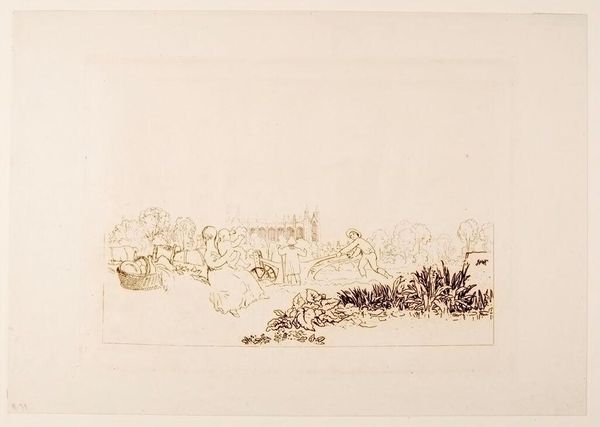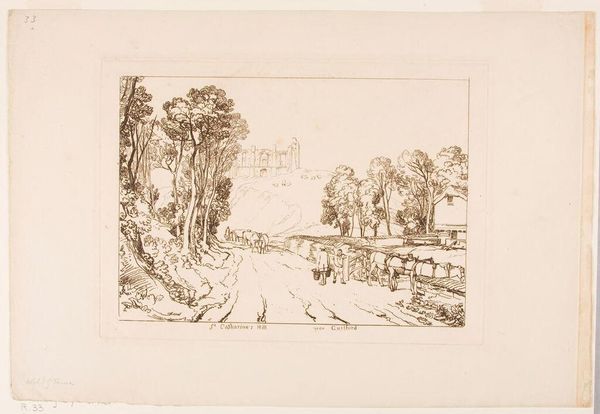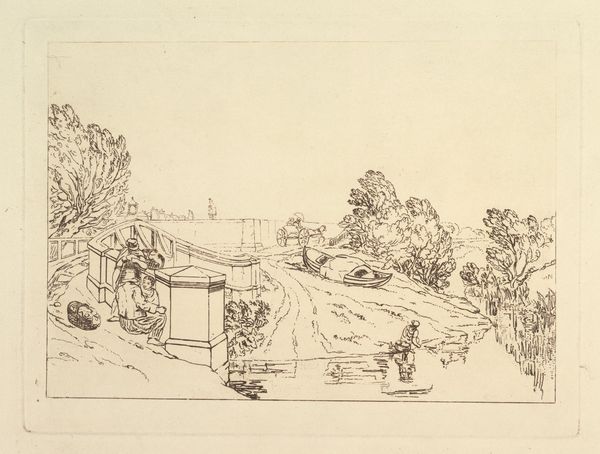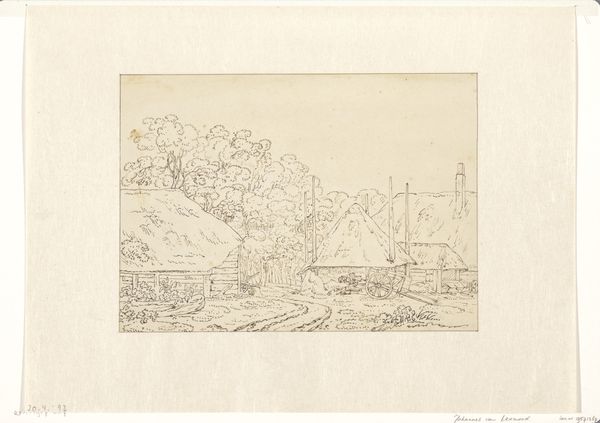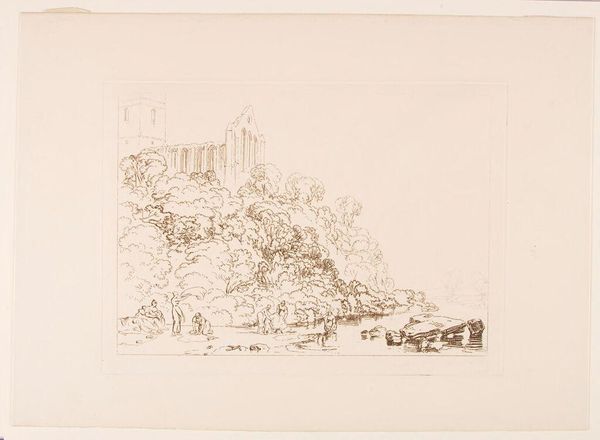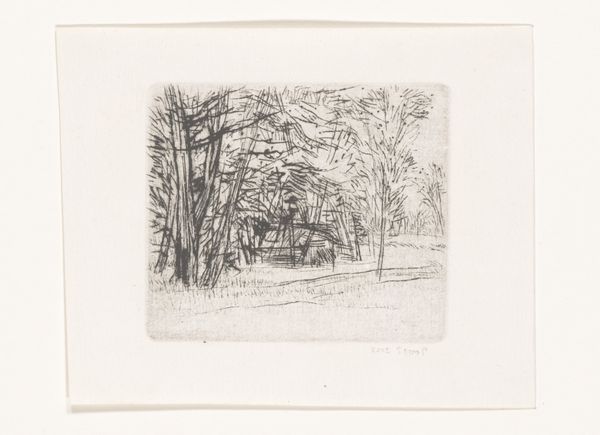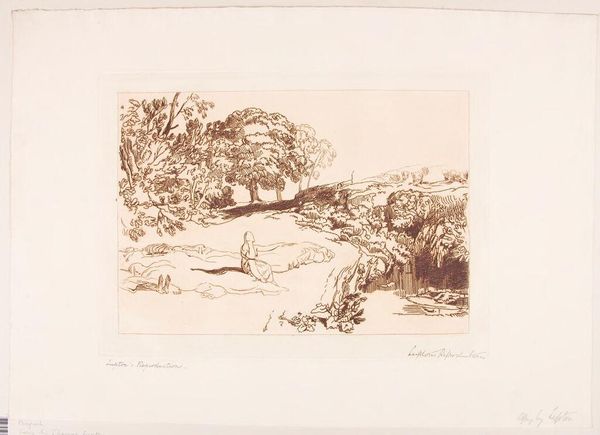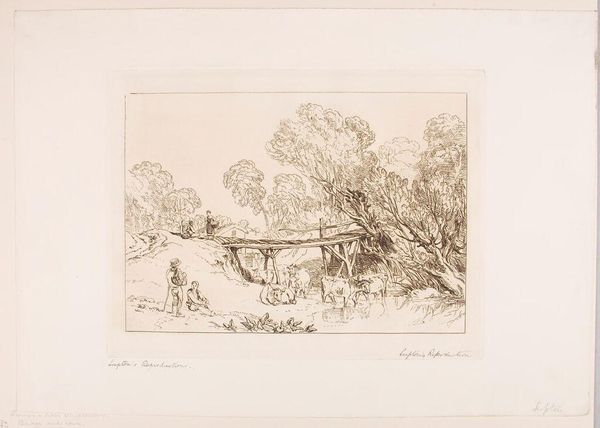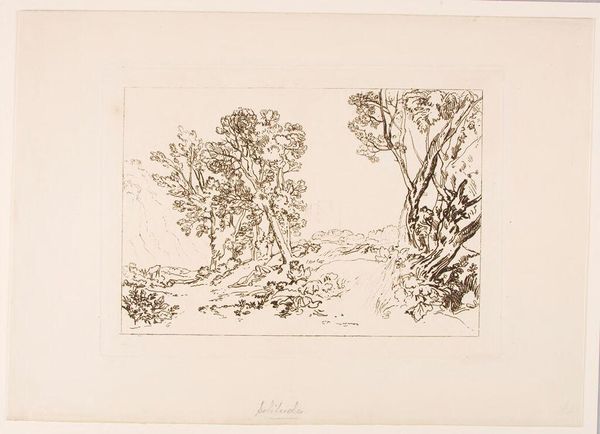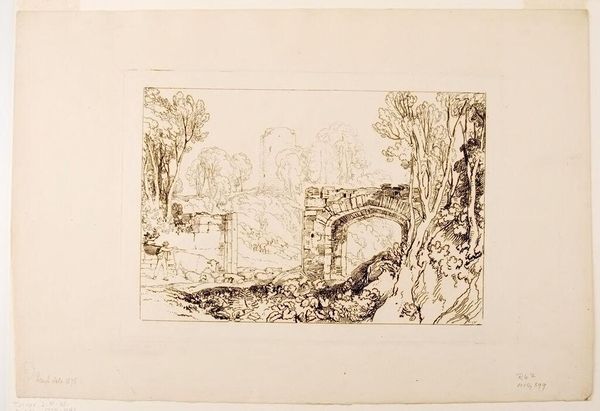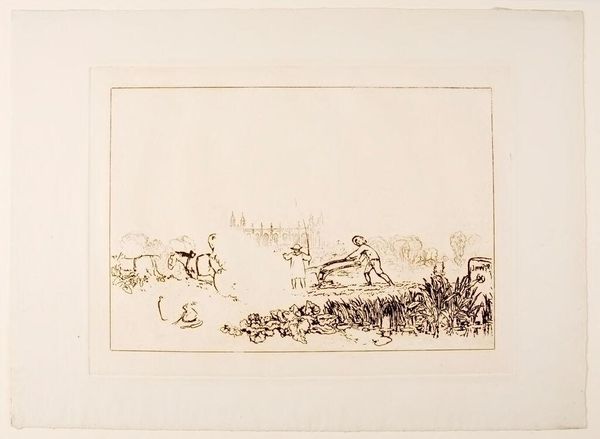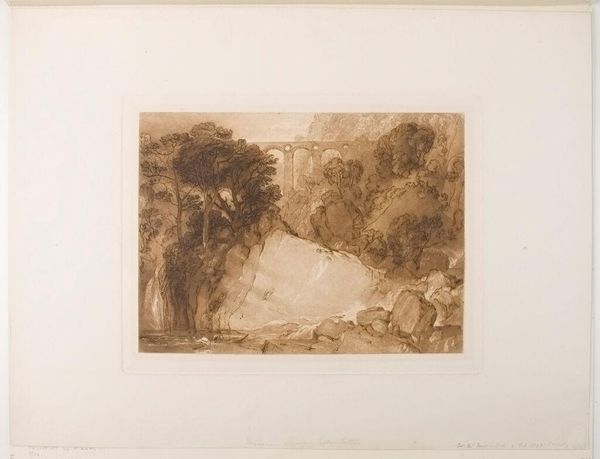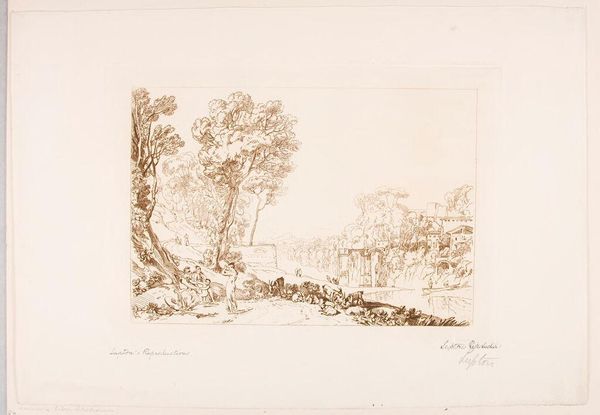
Copyright: CC0 1.0
Curator: The artwork before us is titled "Watercress Gatherers," an etching by Joseph Mallord William Turner. Editor: It feels so delicate, almost ephemeral. The light seems to dissolve the forms. Curator: Indeed. Consider Turner's fascination with the changing landscape and the lives of those who depended on it. Watercress gathering was a common rural activity, often performed by women and children. Editor: The composition, though simple, is quite effective. The bridge and river bank create a strong diagonal, pulling the eye across the scene. Curator: Turner was keen on depicting the everyday realities of rural labor, not merely romanticizing them. These were working people reliant on the river's bounty. Editor: Perhaps, but there's a softened quality, thanks to the etching technique. It presents a picturesque view that, while rooted in reality, leans toward idealized beauty. Curator: Maybe. But it also provides us with a glimpse of a world transformed by industrialization, a world Turner documented and reflected upon. Editor: I appreciate how the minimalism heightens the sense of tranquility, it invites a quiet contemplation of nature and human life intertwined. Curator: Ultimately, "Watercress Gatherers" is an evocative image that encapsulates Turner's complex vision. Editor: And a remarkable study in light and line. Thank you.
Comments
No comments
Be the first to comment and join the conversation on the ultimate creative platform.
